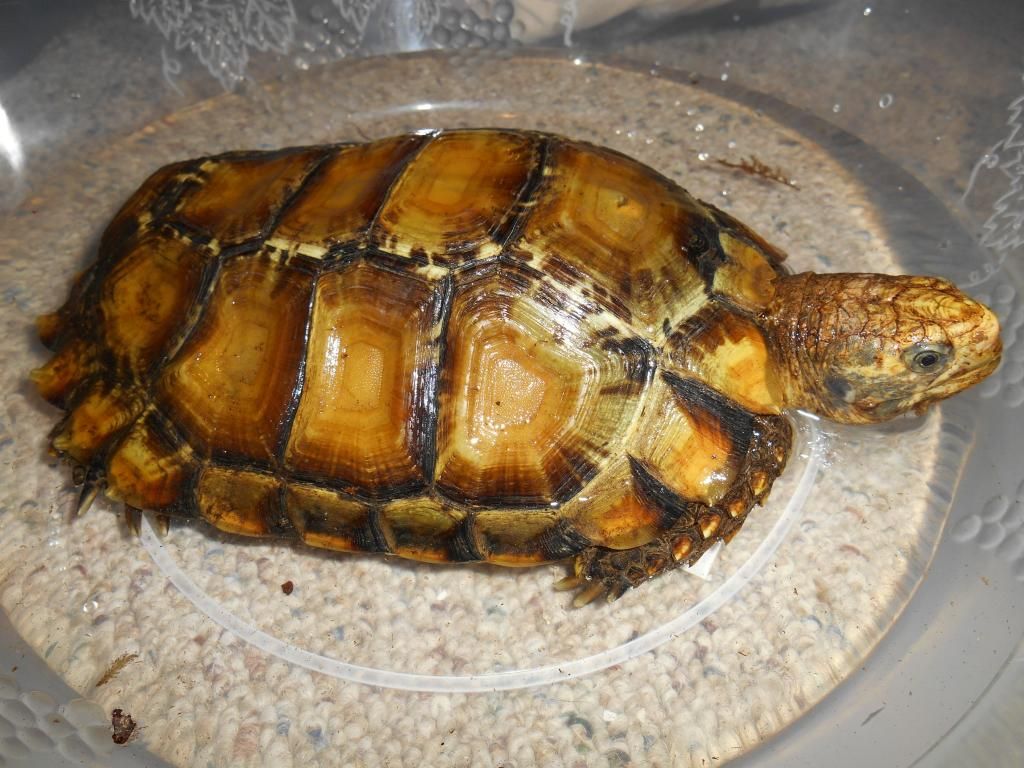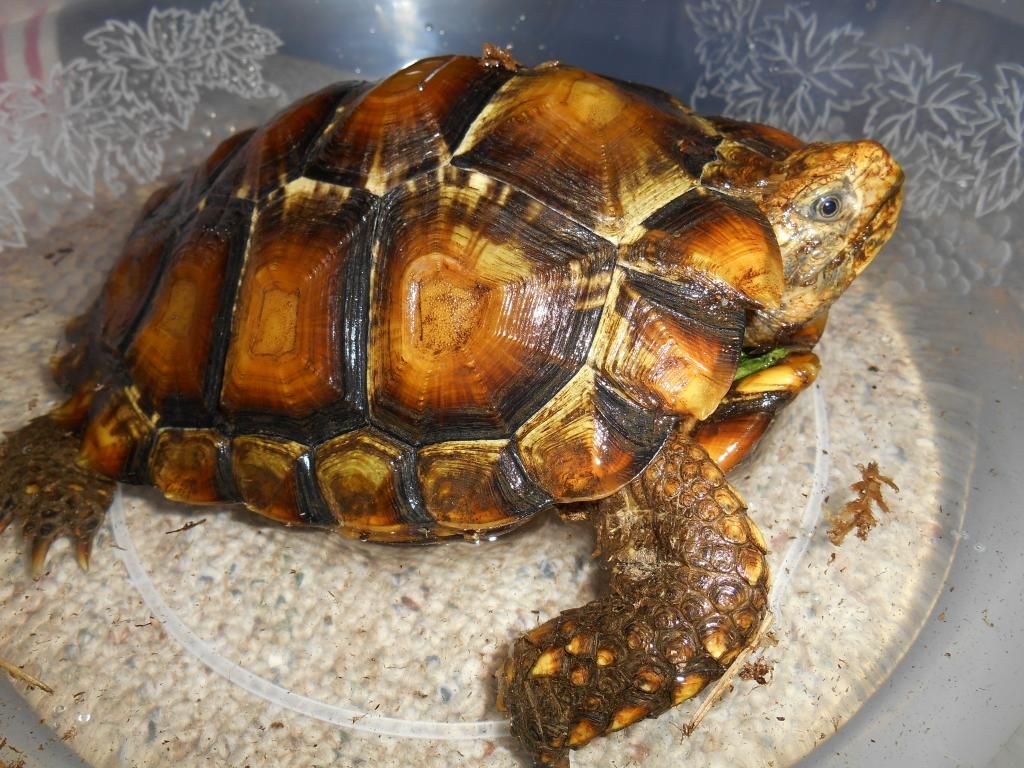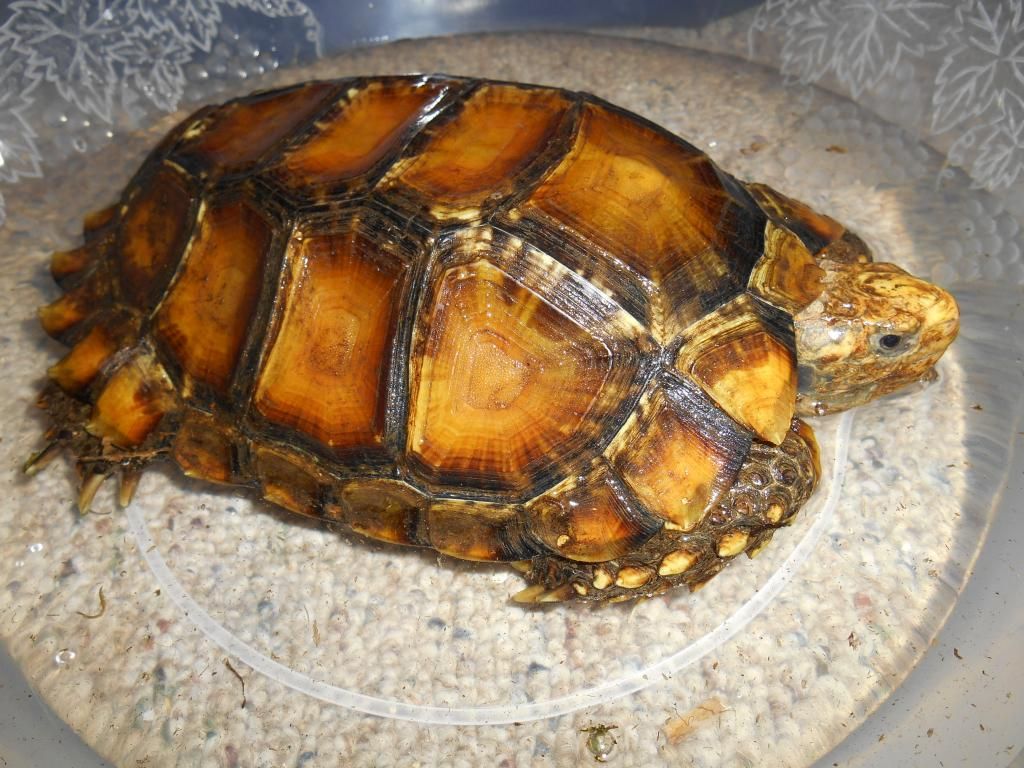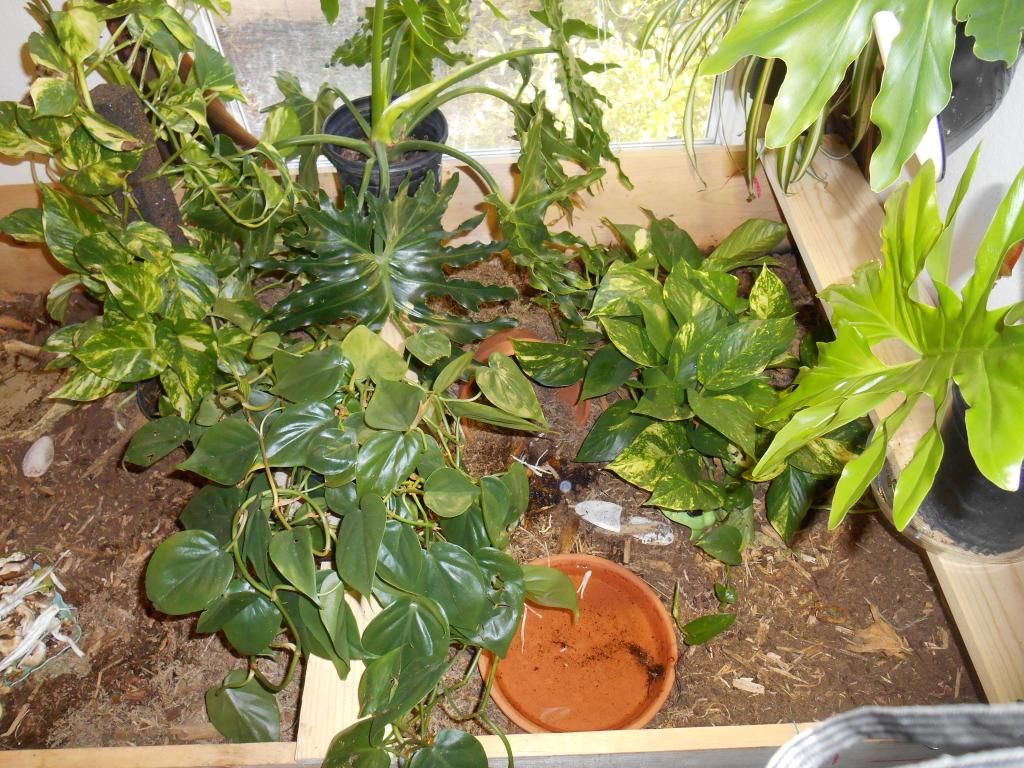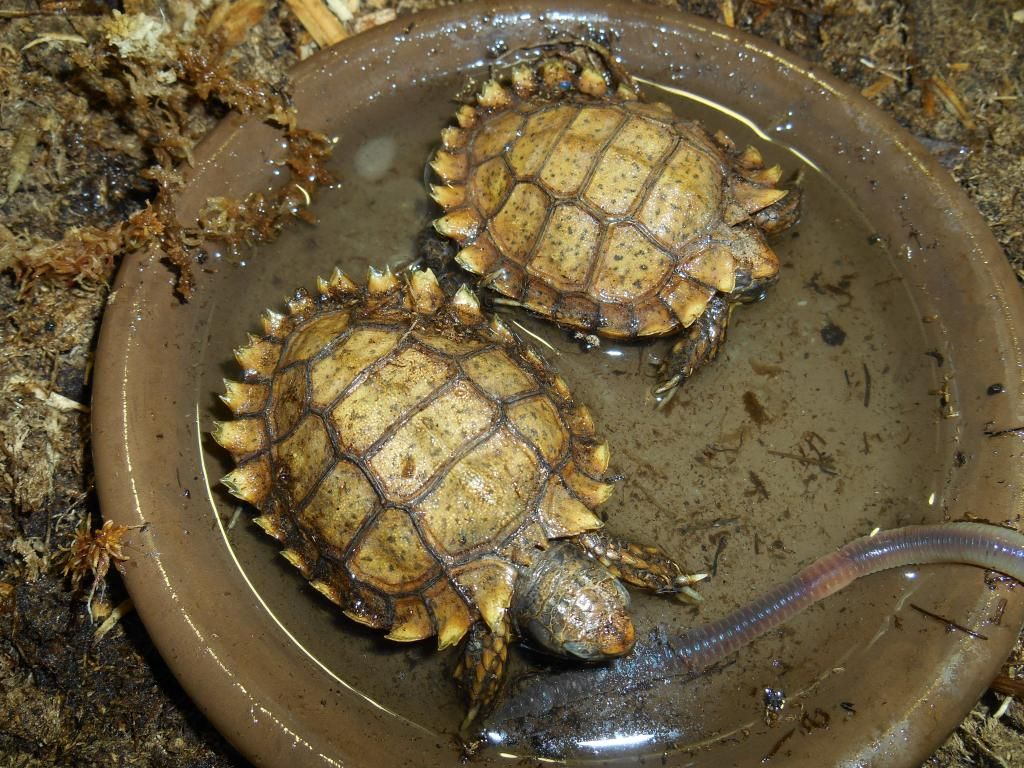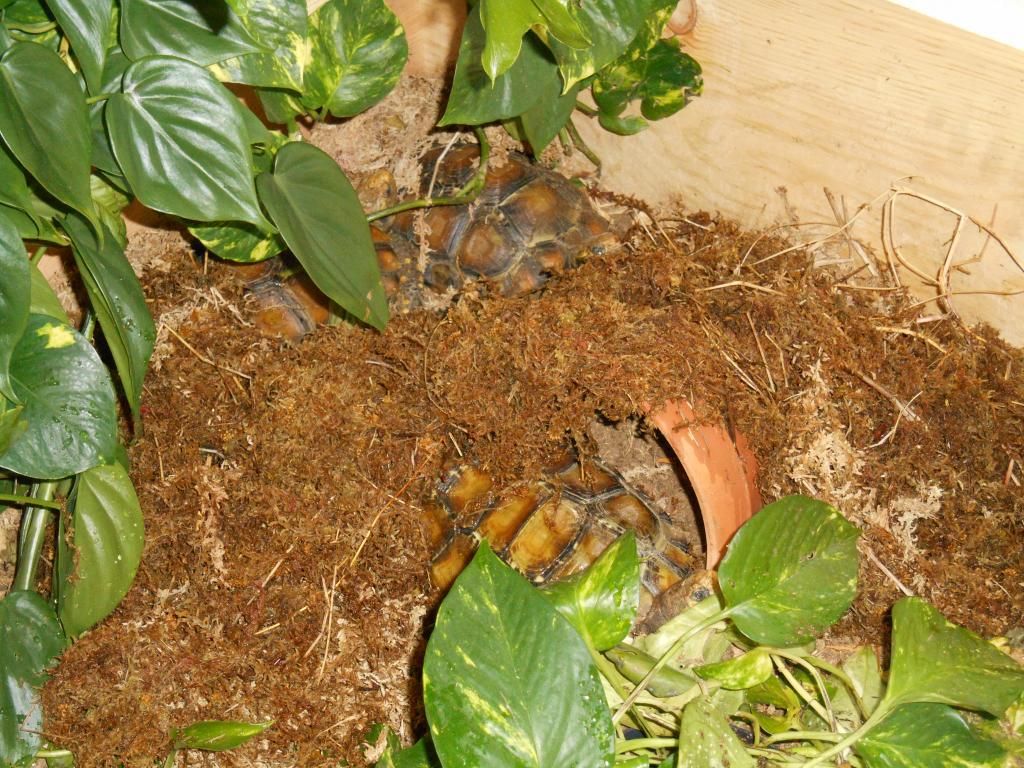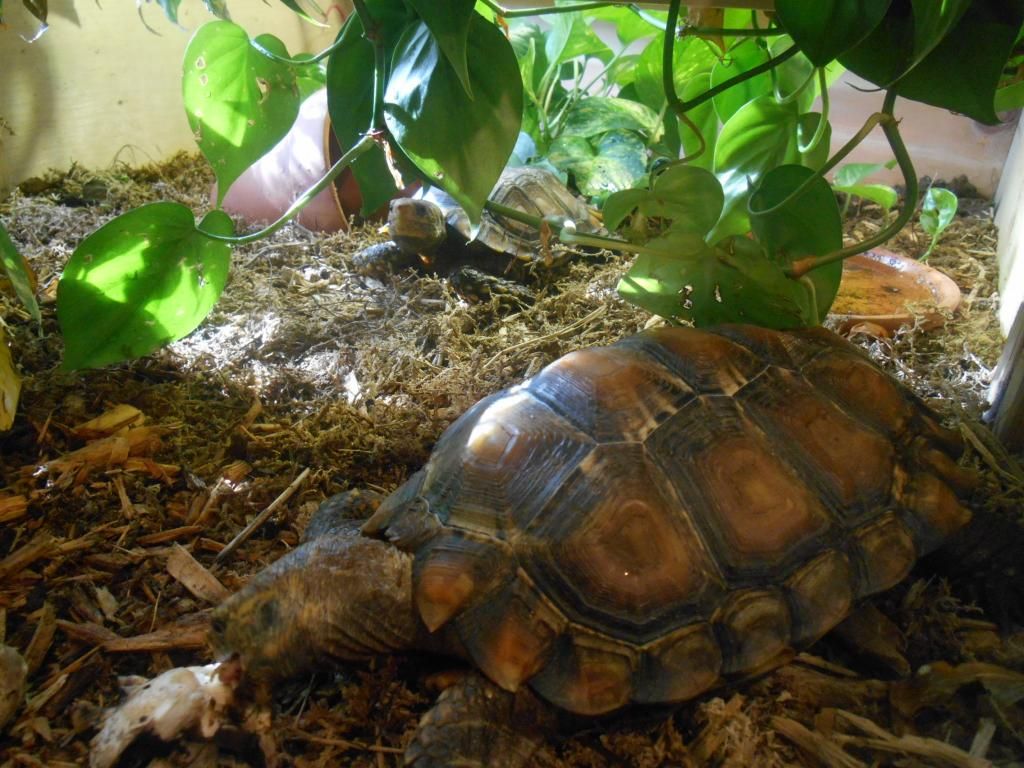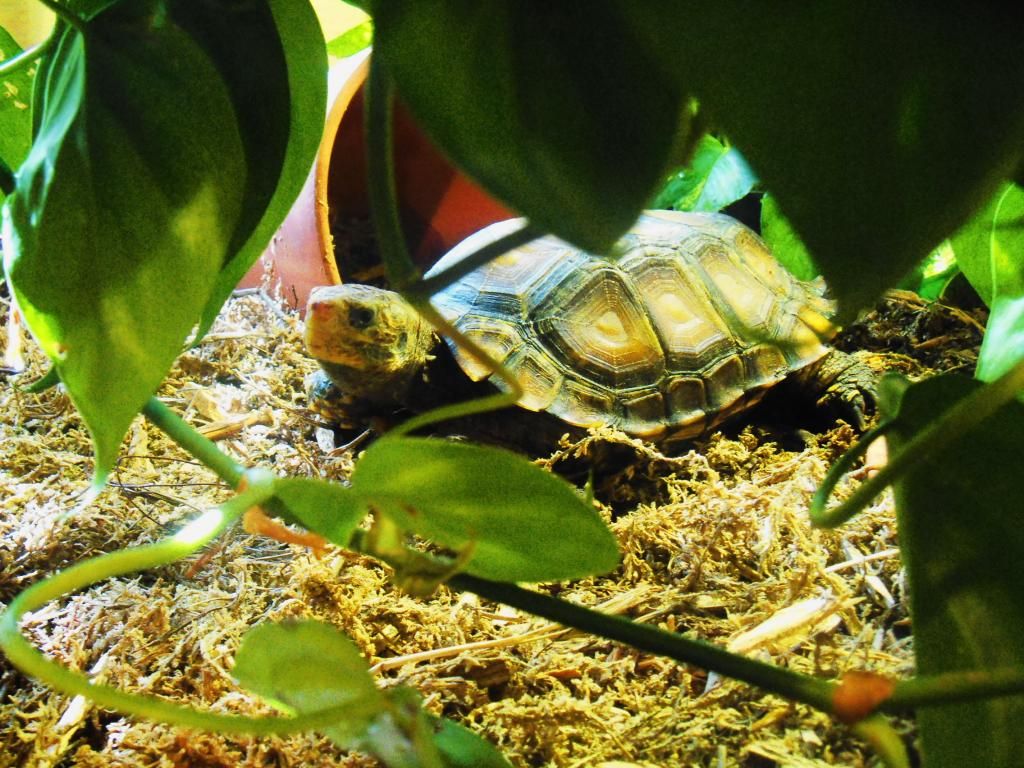What an awesome species to be able to work with. These seemingly prehistoric tortoises are very much the dog friendly tortoise. Here at ATC we have been caring for a small group of Impresseds Tortoises. This group was produced at the Atlanta Zoo back in 06' by Dwight Lawson. (I believe he has had the most successful hatchling of the Impressa. Behler Chelonian Center has done well also.) Its nice to see this species doing well enough for them to be able to surplus out some captive produced animals. We are constructing a nice sized greenhouse for them to use as a permanent enclosure. Currently they have been housed indoors on a 5x10 tortoise run, heavily planted with a few different species of Pothos and philodendrons. (Split leaf, full leaf and swiss cheese philodendron) Also have a spider plant they dont really pay attention to. They do eat the other greens though. Our Impresseds eat almost everything offered.They are very much in love with mushrooms and cuddle bones. The substrate in the enclosure is a mix of cypress mulch, peat moss and sphagnum moss. They love to hide out in the darkest corners under the moss and just watch everything thats going on. Time to time they do bask in the sunlight that comes through the window, they enjoy there mister and soaks. Its fun watching them drink water then shoot it out of their nose like a squire gun then drink some more. Mating is the typical tortoise dance. The male will approach the female, do a little head bobbing dance then run around the female to do their thing. With their size, mannerisms and look, it amazing how close they remind me of my Sonoran desert group. Completely different needs though. Here are a few photos. The flash made some of the pics look a little funny. Sorry for that.
